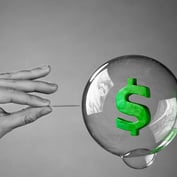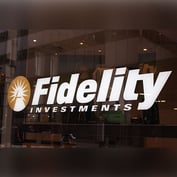Knee-deep into earnings season, we are already seeing many companies beat their earnings estimates handily: Earlier this week, Goldman Sachs reported earnings of $1.78 per share, annihilating the analysts’ estimate of $1.16, while IBM reported earnings of $3.51 per share, easily beating the analysts’ estimate of $3.42. This should come as no surprise to anyone, since companies have gotten very sophisticated about lowering expectations around their earnings reports. That’s one reason so many investing insiders look to the relationship to whisper numbers instead.
Whisper numbers, as you probably know, are — in the most common use of the term — the largely unofficial numbers that a company needs to beat for an analyst to revise his or her estimate of a stock’s value. So, if a company reports earnings of 10 cents per share after an estimate of 8 cents per share, that might not be enough of a beat for that analyst to revise his or her opinion of the stock. But if the analyst’s whisper number was 9 cents per share, the beat — even though it’s only one cent — might be enough for an upgrade.
Whisper numbers are, by their very nature, ethereal. One study called them “unofficial forecasts of earnings per share that circulate among traders and investors.” Other studies have used consensus estimates from such sources as Web chat rooms as whisper numbers — anything that can provide a consensus of individual investor expectations.
No matter how they’re defined, if these numbers truly reflect the sentiment of what makes an investor willing to buy a stock, they’re more accurate than the earnings estimate. There’s something simply axiomatic about this: If you can determine exactly what is going to make a large group of people want to buy or sell a stock, you can anticipate movements in the stock’s price.
But there’s also academic research to support that notion. In the canonical study of whisper numbers, conducted by Bagnoli, Beneish and Watts in 1999, numbers gathered from Internet chat rooms were more accurate in predicting earnings per share than the official consensus earnings estimates.
Another study, from a researcher at Marquette issued in 2008, compared the results from the widely used First Call consensus estimates to the whisper estimates. The research found that while consensus estimates did indeed tend to underestimate actual earnings, the whisper numbers tended to overestimate them. And unlike the earlier study, the Marquette study found that neither was all that much more accurate in the end.
Another study indicated that the overall tenor of the market affects the accuracy of the whisper numbers. This one, from a pair of researchers at San Jose State University, looked at the errors in forecasting during bull and bear markets. The standard errors for the consensus estimates were roughly the same no matter what type of market environment we were in, and consistently underestimated actual earnings. The whisper numbers, as in the previous study, tended to overestimate earnings — but their standard error was much lower during bear markets than during bull markets. Investors, in other words, know enough to temper their enthusiasm when the market is sinking.
So if you plan to rely on whisper numbers, it’s important to assess what kind of market environment we’re in. Another concern: The Internet, naturally, has become the premiere venue for people to calculate and disseminate whisper numbers. So unsurprisingly, a sizable proportion of the whisper numbers concern high-tech companies, if not the Internet itself. “Over 50 percent of the firms covered by whispers are manufacturing high-tech products, developing software, or retailing on the Internet,” wrote Michael Dewally in the Marquette study.
It’s also very easy to overestimate the impact of the whisper numbers. The average errors for both the consensus numbers and the whisper numbers tend to be measured in the hundredths of a percent. And the differences between the two can be very small. Here are some whisper numbers and consensus estimates for companies scheduled to report today, July 20:
Baker Hughes: The analysts’ EPS is 77 cents, while the whisper number is 79 cents.
General Electric: The analysts’ EPS is 37 cents, while the whisper number is 35 cents.








 July 20, 2012 at 04:00 AM
July 20, 2012 at 04:00 AM










